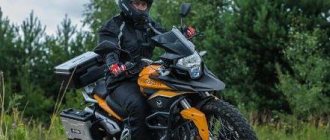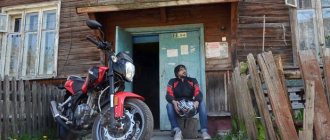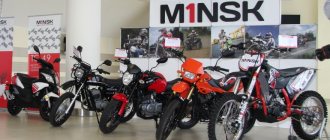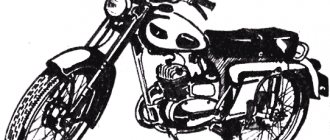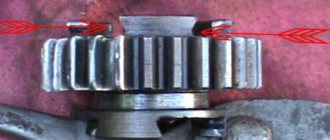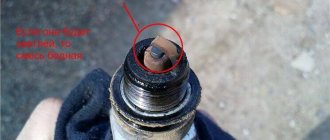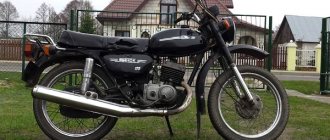| "Minsk" MMVZ-3.115 | |||||||||||||||||||||||||||||||
| general information | |||||||||||||||||||||||||||||||
| Manufacturer | Minsk Motorcycle and Bicycle Plant | ||||||||||||||||||||||||||||||
| Years of manufacture | 1976—1980 | ||||||||||||||||||||||||||||||
| Previous model | Minsk MMVZ-3.111 | ||||||||||||||||||||||||||||||
| Next model | Minsk MMVZ-3.112 | ||||||||||||||||||||||||||||||
| Type | Road | ||||||||||||||||||||||||||||||
| Components | |||||||||||||||||||||||||||||||
Engine
| |||||||||||||||||||||||||||||||
| Lubrication system | together with fuel | ||||||||||||||||||||||||||||||
| Clutch | cork, in oil bath | ||||||||||||||||||||||||||||||
| checkpoint | 4-speed | ||||||||||||||||||||||||||||||
| Drive unit | closed circuit PR-12, 7-1800-2 | ||||||||||||||||||||||||||||||
| Fuel supply | by gravity | ||||||||||||||||||||||||||||||
| Front tire | 80-459 (3.00-18″) | ||||||||||||||||||||||||||||||
| Rear tire | 80-459 (3.00-18″) | ||||||||||||||||||||||||||||||
| Specifications | |||||||||||||||||||||||||||||||
| Tank capacity | 12 | ||||||||||||||||||||||||||||||
| Maximum load, kg | 150 | ||||||||||||||||||||||||||||||
| Maximum speed, km/h | 95 | ||||||||||||||||||||||||||||||
| Dimensions | |||||||||||||||||||||||||||||||
| Length, mm | 2 100 | ||||||||||||||||||||||||||||||
| Width, mm | 790 | ||||||||||||||||||||||||||||||
| Height, mm | 1 200 | ||||||||||||||||||||||||||||||
| Motorcycle base, mm | 1 230—1 275 | ||||||||||||||||||||||||||||||
| Ground clearance, mm | 125 | ||||||||||||||||||||||||||||||
"Minsk" MMVZ-3.115
- a light road two-seater motorcycle from the Minsk motorcycle family produced by the Minsk Motorcycle and Bicycle Plant (BSSR, Minsk, modern name - Motovelo OJSC).
Produced from 1976 to 1980. The predecessor is the “Minsk” model MMVZ-3.111, the successor is the “Minsk” MMVZ-3.112 (this is not a mistake - after the serial number 11 (in the model designation, according to the international marking system for motorcycles), the model with number 15 was released, the model with number 12 was released in 1980)
. Marking means:
- MMVZ - manufacturing plant;
- 3 - motorcycle class (up to 125 cm3);
- 1 — type of motorcycle (road);
- 15 is the serial number of the model.
Device
The MMVZ-3.115 motorcycle model is a further development of the previous Minsk MMVZ-3.111 model.
Engine
The engine is single-cylinder, air-cooled and dual-channel return blown. Aluminum alloy cylinder head.
The engine on the MMVZ-3.115 model differs from its predecessor: engine power has been increased due to better cylinder filling, an increase in the compression ratio (up to 9.5), a new muffler, electronic ignition and a K-62S carburetor have been installed (carburetors were installed on motorcycles before 1978). K-36S), resulting in a power of 11 hp. With. at 6,200 rpm. The engine requires fuel from a mixture of oil and gasoline in a ratio of 1:25.
Transmission
The gearbox is four-speed. The gear shift mechanism is foot-operated. Multi-disc clutch in oil bath. The drive to the rear wheel is by chain, with the main drive protected by stamped casings and rubber chain covers.
Chassis
The frame is tubular, closed type. Telescopic front fork with hydraulic shock absorbers, pendulum type rear suspension with hydraulic shock absorbers.
Electrical equipment
It differs from its predecessor in a modified headlight, modified installation of the central switch and speedometer.
Until 1978, contact ignition was installed with a G-421 generator with a voltage of 6 volts.
And so, take me into your bottomless ranks, motorcycle brothers and sisters)) I’m a weak scribbler, of course, but that’s it)) in short, a post about how I bought my first motorcycle, about how I came to this and what are my plans for my future motorcycle life ) I’ll try to put my thoughts together and write in some order. Let's go))) All my conscious life, I have either stronger or weaker wanted to spend money. Although the family has a mot, Izh Yu5 with a cradle and a homemade trailer for transporting hay, since the parents live in the village and keep a small farm of rabbits, chickens and ducks. For this very reason, I rode a Yupak without a cradle at most 5 times, while all my comrades, during their happy and carefree childhood, drove Izhas, Voskhods, “macaques”, Javas and other Soviet motorcycles... Of course, my older comrades more they were repaired with whatever they drove, especially Voskhods and Izhys, but my friend at that time had a Minsk 112, which was in perfect condition, which always started with half a kick and was looked after by his grandfather. And, either it’s true that Minsk is the most reliable of the Soviet industrial complex, or this particular example, compared to others, was the most serviceable and tuned, but the stereotype about the reliability and unpretentiousness of “Minsk” has firmly settled in my head. Thus, at the same time, when my comrades and friends were spinning pennies, standing on the rear wheel, and doing other nonsense, around the 8th grade I started riding my father’s Iupak with a cradle, which they categorically did not allow me to unhook, since my father I’m an avid fisherman and hunter, and there are also animals at home that constantly ask for hay and fresh grass, the Yupak was a work horse and a priori it was impossible to remove the stroller... I really didn’t really ask to remove it, since I often rode as number two with guys on singles, I also often went to the river in a jupe with a cradle, drove into heavy mud (on purpose, apparently even then the bloody endurish spirit was born in me) often there were not 3 of us, but 5-6 people, the jupa often couldn’t stand it, bearings flew , the “nipples” on the tubes were torn, the knitting needles flew out, the rings burst, etc., for which I often received from my father and as a form of punishment he did not give me a hoe, or he forced me to fix all this together with my comrades, which of course It didn’t work out for me, but my comrades didn’t really need it) Eeeeeeh, it was a golden time...
Then he graduated from the lyceum, entered the University of Kharkov, began to visit home less and less, and mostly when he came home on weekends, he took a Yupaka and rode through fields, forests, rivers, fishing spots, etc., and got a thrill from it...
A little more time passed, and then “BAM”, I graduated from university! )))) I began to come home less and less often (my house is 100 km from Kharkov), and more and more I wanted to go away on the weekends on my own, or with my other half, to the forests and fields. By the way, I forgot to write, after the fifth year, in the summer I got a job (or rather an internship) in a company selling spare parts for agricultural machinery (after all, I have the appropriate education), I interned there for exactly 2 months, I already began to understand and understand spare parts quite well (as for still a student and without experience), and one fine day the director calls me to his place and says the following phrase: “Sash, you’re a cool guy, smart, but sales are not your thing.” To be honest, it was stressful for me, my first work experience and right away like that, I almost cried then))) packed my things, took my salary, said goodbye to everyone and left... I drank for a couple of days, then pulled myself together and started looking for a new one job (I want to remind you that it was the summer after the 5th year, and the 6th year was ahead, since I entered the master’s program.) In short, I went off topic, in short, after a couple of weeks I was hired for an internship at the official Suzuki dealer, in sales department)) And I’ve been working here for almost a year now, practically my dream job, since I really love cars and motorcycles...
I began to live with a girl in a rented apartment, earn money, in short, adult life in all its glory... The thought of my own motorcycle crept into my head more and more often; reminds me of a tractor, rattling, rustling, smoking and barely moving))) The crisis, the dollar exchange rate and other problems of our country made us forget about the Japanese for a long time, and I really wanted to ride through the forests on a light single-hander, BikePost played a very big role in this I often read in my free time at work))) And then at one fine moment I remembered the wonderful Soviet motorcycle Minsk... That’s it, my brain was filled with it... Forums, videos on YouTube, reviews and websites have been viewed and re-read several times already... And as always, almost like everyone else probably, everyone tried to dissuade me, they say, there’s something else, why do you need another Soviet-owned industry?? But I really wanted a light and reliable motorcycle to ride through the forests. Everyone, but only my father and a friend whose Dnieper supported me in my intention to buy a Minchik) Thank them very much for this)
The actual purchase history. Several weeks of monitoring well-known resources and newspapers in Ukraine did not yield results... I am sad, on June 15th I go to Alkh again, I see a cool device in the photo, very close to my hometown, I call the owner, he says that everything is good, everything It works, everything is great and I agree to watch it on the 16th. I take my father (since he lived in Minsk as a child, and there is category A), a friend, money, gasoline, a set of keys, a helmet, and I go out to look. As a result, the moto, which in the photos and words of the seller was ideal, in real life had a list of curable problems: 1. The clutch cable broke when trying to check the gearbox (apparently the minker did not want to change the owner) 2. The spark plug began to work intermittently as soon as the former the owner came to us, apparently he really didn’t want to leave the car) 3. The chain and sprockets need to be replaced 4. The carb needs to be adjusted 5. The bearings in the wheels need to be replaced 6. the rear left turn signal was missing, and they all turned out to be different 7. No front brake 8. Eight wheels, need to be leveled
But the previous owner installed a nice thing in the form of a petal valve, and not a nice thing in the form of a “nulevik”, since the standard filter does not fit, I will decide something about it. As a result, after haggling and bargaining for a little more than 30% of the seller’s original wish list, I took the documents and the money. We changed the spark plug, started it up, the engine worked fine at higher than average speeds, and my father got behind the wheel and drove my motorcycle home without a clutch (a little over 30 km), the motorcycle got there under its own power and now stands in my garage)) There are plans to remove all the jambs , change one right mirror from the scooter to standard round ones (already done) and just ride. In winter, a complete overhaul of the engine, with the replacement of all bearings, seals, checking the CPG, complete painting of the frame and the motorcycle itself, as well as replacement of the wiring, which is very messy (everything is twisted, there are 2 switches, etc.). Basically, this is the story, oh yes, I forgot a little, this is my first personal transport, which I bought myself and with my own money, and the first experience of buying anything from transport)) Thank you all for your attention, I hope you like my post. Full tank and smooth roads!!!
Technical specifications
| Dry weight, kg | 112 |
| Air filter | paper |
| Motor transmission | Chain PV-9.525-1200 |
| Gear ratio | 2,75 |
| Number of master disks | 4 |
| Gear ratios | I - 3.18, II - 1.97, III - 1.39, IV - 1.00 |
| main gear | closed circuit PR-12.7-1800-2 |
| Gear ratio | 2,67 |
| wheel hubs | cast |
| Saddle | double, pillow type |
| Generator | G-427 |
| Ignition coil | B-300B |
| Ignition timing (mm to TDC) | 3-3,5 |
| Headlight bulb | 32×21 |
| Stop signal | FP-242 |
| Direction indicator | UP-208 |
| Speedometer | SP-131 |
| Signal | S-34 |
| Light switch | P-200 |
Minsk M105 (motorcycle) Wikipedia
General information Manufacturer Years of production Previous model Next model Type Components Gearbox lubrication system Drive Fuel supply Front tire Rear tire Technical characteristics Tank capacity Maximum load, kg Maximum speed, km/h Dimensions Length, mm Width, mm Height, mm Motorcycle base, mm Road clearance, mm
| "Minsk" M105 | |
| Minsk Motorcycle and Bicycle Plant | |
| 1967—1971 | |
| "Minsk" M104 | |
| "Minsk" M106 | |
| road | |
| together with fuel | |
| manual 4-speed | mechanical |
| Number of steps: | 4 |
| Gear ratios: | |
| 1st gear: | 3,18 |
| 2nd gear: | 1,97 |
| 3rd gear: | 1,24 |
| 4th gear: | 1,00 |
| Switching: | foot pedal |
“Minsk” M105 is a light road two-seater motorcycle from the “Minsk” motorcycle family produced by the Minsk Motorcycle and Bicycle Plant (BSSR, Minsk, modern name - Motovelo OJSC). Produced from 1967 to 1971. The predecessor is the Minsk M104 model, the successor is the Minsk M106.
Device
The M105 motorcycle model is a further development of the previous M104 model.
Engine
The engine is single-cylinder, air-cooled and dual-channel return blown. Aluminum alloy cylinder head with decompressor.
The engine on the M105 model was modified: on this model, for the first time, instead of a solid cast iron cylinder, the plant used a cast iron liner cast into an aluminum cooling jacket, which improved its heat transfer, work was carried out to improve performance, the engine received a new modernized K-36M carburetor, a lower head bearing was used connecting rod with a separator instead of a bronze bushing, the exhaust system was changed, a new muffler was installed, resulting in a power of 7 hp. at 5,500 rpm[1]. The engine requires fuel from a mixture of oil and gasoline in a ratio of 1:25.
Transmission
The most important innovation of this model is the four-speed gearbox. The gear shift mechanism is foot-operated. Multi-disc clutch in oil bath. Drive to the rear wheel is by chain. On this model, the plant for the first time introduced protection of the main drive chain with stamped casings and rubber chain covers, which increased the service life of the chain.
Chassis
The frame is tubular, closed, reinforced (in relation to M104). Telescopic front fork with hydraulic shock absorbers, pendulum type rear suspension with hydraulic shock absorbers.
Electrical equipment
For the first time, a brake light was installed on the new model, as well as a speedometer backlight.
Technical specifications
| Length, mm | 1960 |
| Width, mm | 660 |
| Height, mm | 960 |
| Base, mm | 1 230—1 255 |
| Ground clearance, mm | 135 |
| Maximum load, kg | 150 |
| Dry weight, kg | 95 |
| Max. speed, km/h | 80 |
| Average fuel consumption, l/100 km | 3,5—4 |
| Cylinder diameter, mm | 52 |
| Piston stroke, mm | 58 |
| Engine displacement, cm3 | 123 |
| Compression ratio | 8 |
| Engine power, hp | 7 |
| Speed at max. power rpm | 5500 |
| Carburetor | K-36M |
| Air filter | contact-oil |
| Fuel | gasoline A-76 |
| Gas tank capacity, l | 12 |
| Motor transmission | Chain PV-9.525-1200 |
| Gear ratio | 2,75 |
| Clutch | multi-disc, oil bath |
| Number of master disks | 4 |
| Transmission | 4-speed |
| Gear ratios | I - 3.18, II - 1.97, III - 1.39, IV - 1.00 |
| main gear | closed circuit PR-12.7-1800-2 |
| Gear ratio | 2,67 |
| Wheels (hubs) | stamped |
| Tires | 65-484 (2.50-19″) |
| Saddle | double, pillow type |
| Generator | G-411 |
| Ignition coil | B-300 |
| Ignition timing (mm to TDC) | 3,7 |
| Headlight bulb | 32×21 |
| Stop signal | FP-230 |
| Direction indicator | absent |
| Speedometer | SP-115 |
| Signal | S-34 |
| Light switch | P-200 |
Notes
Links
wikiredia.ru
Links
- [www.motovelo.by JSC "Motovelo"]
- [blog-moto.ru/ Motorcycle enthusiast's blog]
- [www.mopedcentre.narod.ru/mmvz.html Minsk MotoVelo Plant]
- [web.archive.org/web/20070317020537/mmvz.boom.ru/tablica.htm Technical characteristics of “Minsk” motorcycles]
- [roker.kiev.ua/techinfo/minsk/minsk-mmvz-3.115-3.111-sport/minsk-3-115-111-sport.html Minsk MMVZ-3.115]
| This is a preliminary article about motorcycles. You can help the project by adding to it. |
Excerpt characterizing Minsk MMVZ-3.115
Davout was Arakcheev of the Emperor Napoleon - Arakcheev is not a coward, but just as serviceable, cruel and unable to express his devotion except by cruelty. The mechanism of the state organism needs these people, just as wolves are needed in the body of nature, and they always exist, always appear and stick around, no matter how incongruous their presence and proximity to the head of government seems. Only this necessity can explain how the cruel, uneducated, uncourtly Arakcheev, who personally tore out the mustaches of the grenadiers and could not withstand danger due to his weak nerves, could maintain such strength despite the knightly noble and gentle character of Alexander. Balashev found Marshal Davout in the barn of a peasant's hut, sitting on a barrel and busy with writing (he was checking accounts). The adjutant stood next to him. It was possible to find a better place, but Marshal Davout was one of those people who deliberately put themselves in the gloomiest conditions of life in order to have the right to be gloomy. For the same reason, they are always hastily and persistently busy. “Where is there to think about the happy side of human life, when, you see, I’m sitting on a barrel in a dirty barn and working,” said the expression on his face. The main pleasure and need of these people is to, having encountered the revival of life, throw gloomy, stubborn activity into the eyes of this revival. Davout gave himself this pleasure when Balashev was brought in to him. He went even deeper into his work when the Russian general entered, and, looking through his glasses at Balashev’s animated face, impressed by the wonderful morning and the conversation with Murat, he did not get up, did not even move, but frowned even more and grinned viciously. Noticing the unpleasant impression this technique produced on Balashev’s face, Davout raised his head and coldly asked what he needed. Assuming that such a reception could be given to him only because Davout does not know that he is the adjutant general of Emperor Alexander and even his representative before Napoleon, Balashev hastened to announce his rank and appointment. Contrary to his expectations, Davout, after listening to Balashev, became even more severe and rude. - Where is your package? - he said. – Donnez le moi, ije l'enverrai a l'Empereur. [Give it to me, I will send it to the emperor.] Balashev said that he had orders to personally deliver the package to the emperor himself. “The orders of your emperor are carried out in your army, but here,” said Davout, “you must do what you are told.” And as if in order to make the Russian general even more aware of his dependence on brute force, Davout sent the adjutant for the duty officer. Balashev took out the package containing the sovereign’s letter and placed it on the table (a table consisting of a door with torn hinges sticking out, placed on two barrels). Davout took the envelope and read the inscription. “You have absolutely the right to show or not show me respect,” said Balashev. “But let me note that I have the honor to bear the rank of His Majesty’s Adjutant General...” Davout looked at him silently, and some excitement and embarrassment expressed on Balashev’s face apparently gave him pleasure. “You will be given your due,” he said and, putting the envelope in his pocket, he left the barn. A minute later, the Marshal's adjutant, Mr. de Castres, entered and led Balashev into the room prepared for him. Balashev dined that day with the marshal in the same barn, on the same board on barrels. The next day, Davout left early in the morning and, inviting Balashev to his place, impressively told him that he asked him to stay here, move along with the luggage if they had orders to do so, and not talk to anyone except Mister de Castro. After four days of solitude, boredom, a sense of subordination and insignificance, especially palpable after the environment of power in which he had so recently found himself, after several marches along with the marshal’s luggage, with the French troops occupying the entire area, Balashev was brought to Vilna, now occupied by the French , to the same outpost where he left four days ago. The next day, the imperial chamberlain, monsieur de Turenne, came to Balashev and conveyed to him the desire of Emperor Napoleon to honor him with an audience. Four days ago, at the house to which Balashev was taken, there were guards from the Preobrazhensky Regiment, but now there were two French grenadiers in blue uniforms open on their chests and in shaggy hats, a convoy of hussars and lancers and a brilliant retinue of adjutants, pages and generals waiting to leave Napoleon around a riding horse standing at the porch and his Mameluke Rustav. Napoleon received Balashev in the same house in Vilva from which Alexander sent him.
